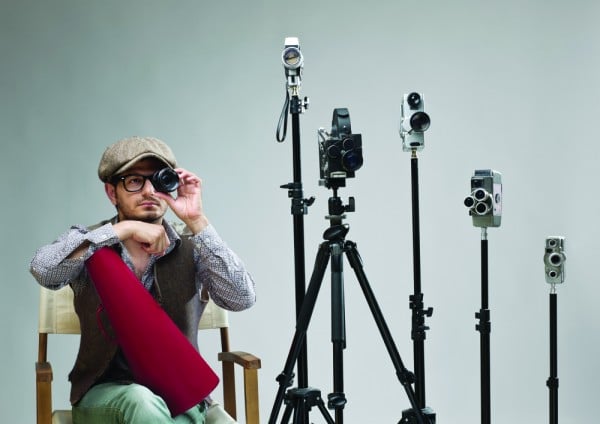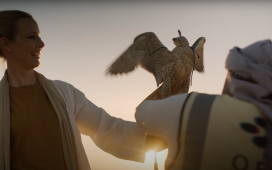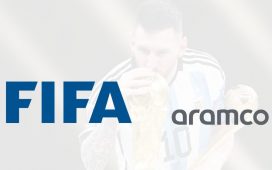The evolution of the digital world has forced PR firms to re-evaluate their old models and embrace a more creative approach to communications. Eleanor Dickinson finds out how digital content has infiltrated Middle East’s industry.

Integration, mergence, content and social are all terms terms routinely waved around by advertising agencies and public relations firms these days, and it’s no wonder that people are struggling to distinguish between the two.
As creative agencies fight newsfeeds and ad-blockers with content designed to earn consumer attention, PR companies are increasingly creating their own video and digital content as their traditional audience’s attention shifts from print to the digital world. The concept of the editorial ‘third party’ has dissolved into multiple parties across numerous outlets, and PR agencies have faced the wake-up call that a standard press release will not cut it anymore.
“In today’s world there is this real mergence between earned coverage, which was PR, and paid coverage, which was advertising,” explains Tod Donhauser, CEO of Edelman UAE. “And these were these two silos that didn’t really interact. But now the way that people interact with digital has changed the media landscape. Now people see on average nine sources of news a day, but on the flipside people are cutting the cord; they’re using ad-blockers. The old models aren’t working anymore.”
Edelman is one of a number of PR companies in the Middle East now operating a ‘creative division’, following a trend that has taken place globally over recent years. Last year the company recruited Mohammed Kabbani, former associate creative director at J. Walter Thomson MEA and a specialist in Arabic graffiti, to lead the team of 20 copywriters, designers and traffic managers and ensure that no channel is left untouched. While the thought of producing advertisements would have provoked horror for the average PR years ago, Donhauser cheerfully admits his team have made print ads and are in a position to make TV commercials should a client request it. “We’re not trying to do what we did five years ago; we’re not trying to do what an ad agency is doing,” he says. “We’re doing a hybrid approach, which I think ultimately is going to be a lot more effective because of what the clients want in today’s media landscape.”
Zamin Dharsi, former creative director at a large Dubai PR agency, and now head of corporate communications and Al Sayegh Media, echoes this necessity for change: “Amongst other things, traditional PR content only tends to be useful to one type of publication (you really can’t use a press release anywhere else besides a publication). However, reimagined, shareable content has the capacity to be used in multiple places. An infographic sent out to journalists could be used for their own social channels; a video made for a digital publication could be used as pre-roll advertising. The numbers of views and shares spoke for themselves and made the clients very happy.”
Elsewhere in the Middle East, Memac Ogilvy Dubai has also recently embraced content creation with the formation of its own specialist division. Joe Lipscombe, a former journalist and now editorial director, explains the agency’s new direction: “Previously a client would come and say ‘we want a press release’ or ‘we want an influencer’. But we realised that this was the end product: it’s more the vehicle. What we wanted to do was bring it back to a blank piece of paper and start from the beginning. And my team looks at what the objective is, where the audience is, and we create the idea out of that. Then that leads to the concept and how it’s going to live. It’s all about not restricting yourself by limiting yourself to the channels.”
Some of the areas ventured into by Edelman and Ogilvy may set alarm bells ringing among advertising bosses. An example of one campaign undertaken by Edelman was an activation for Dubai Tourism at Waterloo Station in London, an exercise one would usually associate as being the product of the agency of record. Is Edelman’s work slipping into the realm reserved for advertising? “Not at all,” says Donhauser. “For example, content we make for YouTube would be repackaged to make it as relevant to the users as possible. Is there going to be a narrative thread through the story? Is it going to be a shepherd of the brand? Yes, absolutely. Will it be repackaged as a different form [to an ad]? Of course; the message and the concept will be the same, but it will have different manifestations. It’s a continuum: it can start at one end
as an ad and end at another as a
press release.”
He adds: “We’re going to do it differently. And ultimately I think we are going to be more impactful. Otherwise we should all quit our jobs and work for creative agencies.”
PR “at its very core” is about content creation, says Dharsi. But that doesn’t mean it’s crossing into another’s territory: “It was very important that we never replaced what another agency could do,” he says. “Instead my role was to reimagine what PR looked like.
“We need a bit of a paradigm shift – instead of looking at creative and digital as independent tactics or add-ons like fast-moving items in a supermarket, we must focus on how they actually replace and perhaps help reinvent traditional tactics. I sometimes wonder if a press-release of the future would be more of a visual release: a series of infographics with a light explanation, or a comic strip, or even a video rather than a long and hefty write-up. Only once we are willing to shine a light onto how we communicate and truly ask ourselves if this can be improved is when things get better.”
Ogilvy, meanwhile, has thrown itself into the deep end by becoming both content producer and publisher for Coca-Cola. Its project, entitled ‘Journey’, follows the same vein as any news or information site. The online space hosts a number of videos, interviews and graphic designs. “It’s no different from any other content site, except that it has Coke’s branding,” Lipscombe says. “The idea behind it was how do you make a brand like Coca-Cola relevant when they’re not just competing with competitors anymore, but everyone else creating content? So the idea was to turn them into more of a storytelling machine. Some argue it is less important now everyone can become a content creator and engage directly with their audiences, but I would argue it’s more important than ever for those reasons.”
Though still in its early stages, the overall aim of Journey is to build a “consistent narrative” over a long-term period – a number of years – rather than simply churning out random content on a regular basis, says Lipscombe. “It used to be that content was a simplistic end-game solution. Today, we work much more closely with our clients to create content based on a problem. We have so many channels and vehicles, and so much more consumer behaviour data and insight, that we have to tailor our content much more specifically. It just requires more thinking.”









